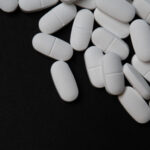Deprecated: preg_replace(): Passing null to parameter #3 ($subject) of type array|string is deprecated in /home/steroido/public_html/wp-content/themes/Extra/includes/builder/module/field/Border.php on line 796
Steroid Articles
PopularLong-Term Effects of Steroid Use on the Endocrine System
🔊 Listen to Post Anabolic steroids have gained notoriety for their ability to enhance...
Testosterone Replacement Therapy
Top RatedTestopel, the Ideal Testosterone Replacement
The first question is if testosterone replacement is right for you. If the answer is yes then the next question is what is the best method.
Newswire
LatestOlympia Weekend Mr. & Ms. Olympia Oct.9-12 2025 Las Vegas
Olympia Weekend 2025 in Las Vegas (October 9–12) delivered drama, depth, and big-stage...
- SARMS
- Steroid Profiles
- Performance-Enhancing Compounds
- Training
- Protein Peptides
- Anti-Estrogen Drugs
The Role of SARMs in Medical Research and Potential Therapies
🔊 Listen to Post Selective Androgen Receptor Modulators (SARMs) have become a focus...
Dianabol Steroid Profile
🔊 Listen to Post Dynabol is a performance-enhancing steroid designed for athletes...
Testosterone Propionate Profile
🔊 Listen to Post Testosterone Propionate Profile Testosterone Propionate, often...
Play Hard Hydrate Fuel Chill: Game-Day Recovery
After a grueling workout or an intense sports game, particularly for athletes like college...
How Protein Peptides Enhance Health in Women
🔊 Listen to Post Protein peptides have become a buzzword in health and beauty...
Arimidex (anastrozole)
Although Arimidex does increase testosterone levels slightly in the body, it is more often used in conjunction with other steroids to lower estrogen in the body...
- Dr Thomas O'Connor
- HGH
- Muscle Science
- Cutting Programs
IGF-1, Heart Health and Bodybuilding
🔊 Listen to Post By Thomas O’Connor, MD I’ve stayed...
HGH (Human Growth Hormone) Chemical profile
🔊 Listen to Post By John Stone Human Growth Hormone, also known...
Vitamin B12: The Essential Nutrient
Vitamin B12: The Essential Nutrient Vitamin B12, also known as cobalamin, is a vital nutrient that...
The Science Behind Shredding Fat
🔊 Listen to Post Cutting is a critical phase in bodybuilding that focuses on...




















































































